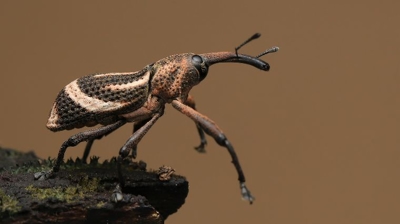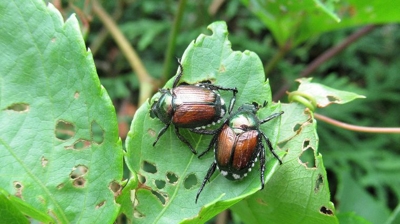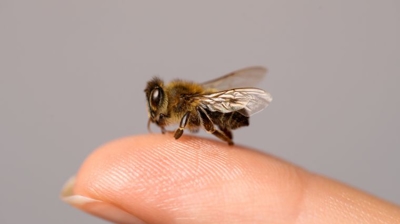
Squash Bugs
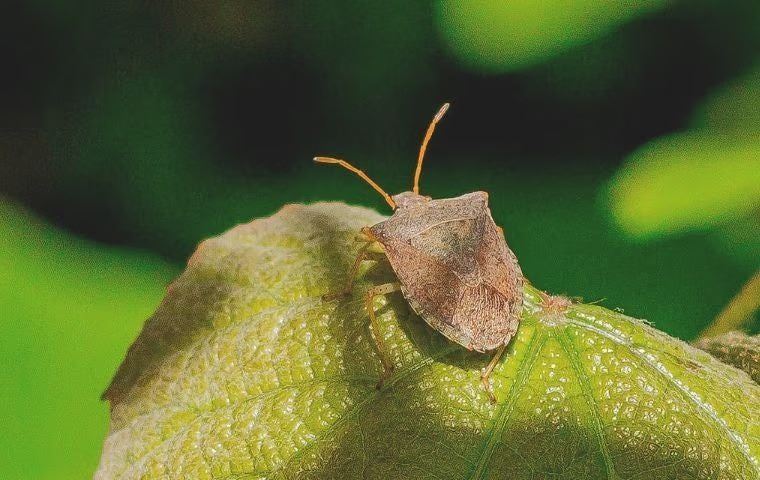
Squash bugs (Anasa tristis) are common garden pests that can affect squash plants, including zucchini, pumpkins, and other members of the cucurbit family. They are found in various regions of the United States. Here's what you need to know about squash bugs:
Identification
- Adult squash bugs are brownish-black insects with flat, oval-shaped bodies, measuring around 1/2 to 5/8 inch in length.
- They have distinctive orange or rust-colored stripes on their abdomens and wings.
- Squash bug eggs are small, oval, and copper-colored, often laid in clusters on the undersides of leaves.
- Young squash bugs (nymphs) are initially light green but gradually darken as they mature.
Behavior and Lifecycle
- Squash bugs are primarily herbivorous and feed on the sap of cucurbit plants.
- They are known to damage plants by piercing the leaves and stems with their needle-like mouthparts, causing wilting, yellowing, and sometimes death of plant tissue.
- Squash bugs typically overwinter in garden debris, such as dead leaves and plant residues.
- In the spring, adults emerge and lay eggs on the undersides of squash plant leaves.
- Nymphs hatch from the eggs and go through several developmental stages before reaching adulthood.
- There can be multiple generations of squash bugs in a single growing season.
Damage
- Squash bug feeding can weaken plants, reducing their ability to produce fruit.
- They may also transmit a toxin while feeding that can further harm plants.
Control and Management
Integrated pest management (IPM) practices can help manage squash bugs effectively:
- Handpick adult squash bugs and their eggs regularly, particularly in the early stages of infestation.
- Use row covers or netting to protect young squash plants during the early part of the growing season.
- Rotate crops and practice good garden sanitation by removing debris to reduce overwintering sites.
- Companion planting with herbs like nasturtium and marigold can help deter squash bugs.
- Beneficial insects like parasitic wasps and tachinid flies can be natural enemies of squash bugs.
It's important to be vigilant in monitoring your squash plants for signs of squash bug infestations, as early detection and intervention can help minimize damage. Additionally, using a combination of control methods as part of an integrated approach can be effective in managing squash bug populations in your garden.
Squash Bugs
Squash bugs (Anasa tristis) are common garden pests that primarily feed on plants in the cucurbit family, which includes squash, pumpkins, zucchini, cucumbers, and melons. Here's more information about squash bugs:
Identification
- Adult squash bugs are approximately 1/2 to 5/8 inches long and have a distinctive appearance.
- They have a flattened, shield-shaped body with a brownish-black color.
- The abdomen of an adult squash bug is marked with orange or rust-colored stripes.
- Squash bug nymphs, which are the immature stages, start out light green but darken as they mature.
Behavior and Lifecycle
- Squash bugs are sap-feeding insects, meaning they pierce plant tissue and feed on the plant's juices.
- They typically feed on the leaves, stems, and fruits of cucurbit plants.
- Female squash bugs lay clusters of small, oval-shaped copper-colored eggs on the undersides of leaves.
- Nymphs hatch from these eggs and go through several molts as they grow into adults.
- Squash bugs overwinter as adults in protected areas, such as garden debris, leaf litter, or structures.
Damage
- Squash bugs can cause significant damage to cucurbit plants.
- Their feeding results in wilting, yellowing, and browning of leaves, which can weaken and even kill the plant.
- In severe infestations, squash bugs may directly damage the fruits, leaving scars or causing them to rot.
Control and Management
Effective control of squash bugs typically involves a combination of strategies:
Handpicking
Regularly inspect your plants and remove adult squash bugs, nymphs, and eggs by hand. Drop them into a container of soapy water to dispose of them.
Insecticidal Soap
Apply insecticidal soap or neem oil to nymphs and adults. Follow the product label instructions for safe and effective use.
Row Covers
Use row covers or fine mesh netting to physically exclude squash bugs from your plants during the early part of the growing season.
Garden Hygiene
Practice good garden sanitation by removing debris and plant residues, as squash bugs often overwinter in these areas.
Companion Planting
Some companion plants like nasturtiums and marigolds can help deter squash bugs from your cucurbit crops.
Beneficial Insects
Encourage natural enemies of squash bugs, such as parasitic wasps and tachinid flies, which can help control their populations.
It's important to monitor your garden regularly for signs of squash bug infestations, especially during the growing season. Early detection and prompt intervention can help minimize damage and protect your cucurbit crops. Integrated pest management (IPM) practices that combine various control methods are often the most effective approach to managing squash bugs.
Pumpkin Bug
Two common insect pests that can damage pumpkin plants are the squash bug (Anasa tristis) and the squash vine borer (Melittia cucurbitae). Here's a brief overview of both:
Squash Bug (Anasa tristis)
- Squash bugs are sap-feeding insects that belong to the family Coreidae.
- They have a brownish-black, shield-shaped body with distinctive orange or rust-colored stripes on their abdomen.
- Squash bugs primarily feed on the leaves, stems, and fruits of cucurbit plants, including pumpkins.
- They can cause wilting, yellowing, and browning of pumpkin leaves, leading to plant damage.
- Management techniques for squash bugs include handpicking, using row covers, applying insecticidal soap, and practicing good garden hygiene.
Squash Vine Borer (Melittia cucurbitae)
- Squash vine borers are moths whose larvae bore into the stems of cucurbit plants, including pumpkin vines.
- The adult moths are clear-winged with an orange abdomen and resemble wasps.
- Squash vine borer larvae tunnel into the stems, causing the affected vines to wilt and die.
- Management involves monitoring for adult moths, using row covers to protect young plants, and surgically removing and destroying larvae if found.
If you are encountering issues with pumpkin plants in your garden, it's essential to correctly identify the specific pest causing the damage to implement the most appropriate control measures. Regular inspection and early intervention can help protect your pumpkin plants and maximize your harvest.
Squash Lady Beetle
Here's more information about this beetle:
Identification
- The Squash Lady Beetle is a member of the lady beetle family (Coccinellidae), known for its distinctive, round shape and typically spotted appearance.
- Adult Squash Lady Beetles are oval-shaped and have a bright yellow to orange background color with black spots.
- They are similar in appearance to the more commonly recognized Ladybugs (Ladybirds).
Habitat and Behavior
- Squash Lady Beetles are often found on plants in the cucurbit family, including squash, pumpkins, cucumbers, and melons.
- These beetles primarily feed on the leaves and fruit of cucurbit plants.
- They are generally considered herbivores and can occasionally be considered pests of these crops.
Damage
Squash Lady Beetles can cause damage to cucurbit plants by feeding on the leaves, creating holes and damage to the foliage.
While they are not as voracious as some other plant-feeding insects, large populations of Squash Lady Beetles can potentially harm the plants.
Management
- Squash Lady Beetles are not typically a severe pest, and their populations are often kept in check by natural predators, including other lady beetle species.
- In cases of significant infestations, you can use various methods to manage their numbers, such as handpicking the beetles, using insecticidal soap or neem oil, or introducing beneficial insects that feed on them.
It's important to monitor your cucurbit plants for any signs of pest damage, including Squash Lady Beetles, and take appropriate measures if their populations become a concern. Integrated pest management (IPM) practices that combine various control methods can help protect your crops effectively while minimizing harm to beneficial insects and the environment.
Squash Bug Nymph
Squash bug nymphs are the immature stages of squash bugs (Anasa tristis), which are common pests that can damage plants in the cucurbit family, including squash, pumpkins, zucchini, and cucumbers. Here's more information about squash bug nymphs:
Identification
- Squash bug nymphs undergo several developmental stages, or instars, as they grow into adults.
- When they first hatch from eggs, squash bug nymphs are small and light green, often resembling tiny, elongated, and soft-bodied insects.
- As they mature, squash bug nymphs darken in color and become more elongated in shape.
- The nymphs have wing pads that become more prominent in later instars but do not fully develop into wings until they become adults.
Behavior and Feeding
- Squash bug nymphs feed on plant sap by piercing the plant's tissue with their needle-like mouthparts and sucking out the juices.
- They primarily feed on the leaves, stems, and fruits of cucurbit plants.
- Nymphs can cause damage to plants by reducing their vitality, leading to wilting, yellowing, and browning of plant tissues.
Development
- Squash bug nymphs go through several molts as they grow and develop into adults.
- During each molt, they shed their exoskeleton and emerge with a new, larger one.
- The number of molts varies but typically ranges from five to seven before reaching the adult stage.
Control and Management
Managing squash bug nymphs and adults often involves similar strategies:
- Regularly inspect your cucurbit plants for signs of nymphs, eggs, and adult squash bugs.
- Handpick the nymphs and adults and drop them into a container of soapy water to dispose of them.
- Apply insecticidal soap or neem oil to nymphs and adults, following the product label instructions.
- Use row covers or netting to physically exclude squash bugs and nymphs from young plants during the early part of the growing season.
- Practice good garden hygiene by removing debris and plant residues, which can provide overwintering sites for squash bugs.
Effective management of squash bug nymphs and adults requires vigilance and regular monitoring of your cucurbit plants. Early intervention can help minimize damage and protect your crops. Integrated pest management (IPM) practices that combine various
How do you get rid of squash beetles?
Pest control companies use various methods to get rid of squash bugs and prevent further infestations. Here is an overview of the typical steps and strategies a pest control company may employ:
Inspection and Identification
- Pest control technicians begin by inspecting the affected area to confirm the presence of squash bugs and assess the extent of the infestation.
- They also identify the specific type of squash bugs and determine the life stage (adults, nymphs, or eggs) to plan the most effective treatment.
Treatment Plan
Based on the inspection findings, the pest control company develops a customized treatment plan to address the squash bug infestation.
Chemical Control
- Pest control companies may use approved insecticides that are specifically labeled for squash bug control.
- These insecticides are applied to the affected plants, targeting both adult squash bugs and nymphs.
- Technicians carefully follow the product label instructions, including proper dilution rates, application methods, and safety precautions.
Biological Control
- Some pest control companies may employ biological control methods, such as introducing natural predators or beneficial insects that feed on squash bugs.
- Beneficial insects like parasitic wasps can help reduce squash bug populations.
Cultural Practices
- Pest control professionals may recommend and implement cultural practices to reduce the attractiveness of the garden or eliminate squash bug hiding places.
- This may include removing plant debris, maintaining proper garden hygiene, and rotating crops to disrupt the squash bug life cycle.
Ongoing Monitoring
- Pest control technicians continue to monitor the treated area to ensure the effectiveness of the chosen treatment methods.
- If necessary, follow-up treatments may be scheduled to address any remaining squash bugs or newly hatched nymphs.
Prevention
- Pest control companies often provide recommendations for preventive measures to reduce the risk of future squash bug infestations.
- This may involve educating homeowners or gardeners on proper garden care practices and plant selection.
It's important to note that pest control companies aim to use environmentally responsible and safe methods while effectively controlling squash bug infestations. Additionally, homeowners can take proactive steps to help prevent squash bug problems, such as practicing good garden hygiene, monitoring their plants regularly, and seeking professional assistance when needed. Integrated pest management (IPM) approaches that combine multiple strategies are often the most effective in managing squash bugs and other garden pests.
Gray Bugs On Squash
Gray bugs on squash can refer to several potential pests. One common pest that fits this description is the squash bug (Anasa tristis). Here's more information about squash bugs and their appearance:
Squash Bug Identification
- Squash bugs are typically grayish-brown or dark gray in color. They have a somewhat flattened, shield-shaped body.
- Adult squash bugs can grow to about 5/8 of an inch (around 15 mm) in length.
- They often have distinctive orange or rust-colored stripes on their abdomen and wings.
- Squash bugs have piercing-sucking mouthparts and feed on the sap of squash and other cucurbit plants.
- Nymphs, the immature stages of squash bugs, may appear gray or grayish-green and are smaller and more oval in shape.
Behavior and Damage
- Squash bugs primarily feed on the leaves, stems, and fruits of squash plants, as well as other cucurbit crops like pumpkins and zucchini.
- They use their piercing-sucking mouthparts to feed on plant sap, which can lead to wilting, yellowing, and browning of plant tissues.
- Squash bugs are often found in groups on the undersides of leaves, where they lay their eggs and feed.
- In severe infestations, they can weaken and even kill squash plants.
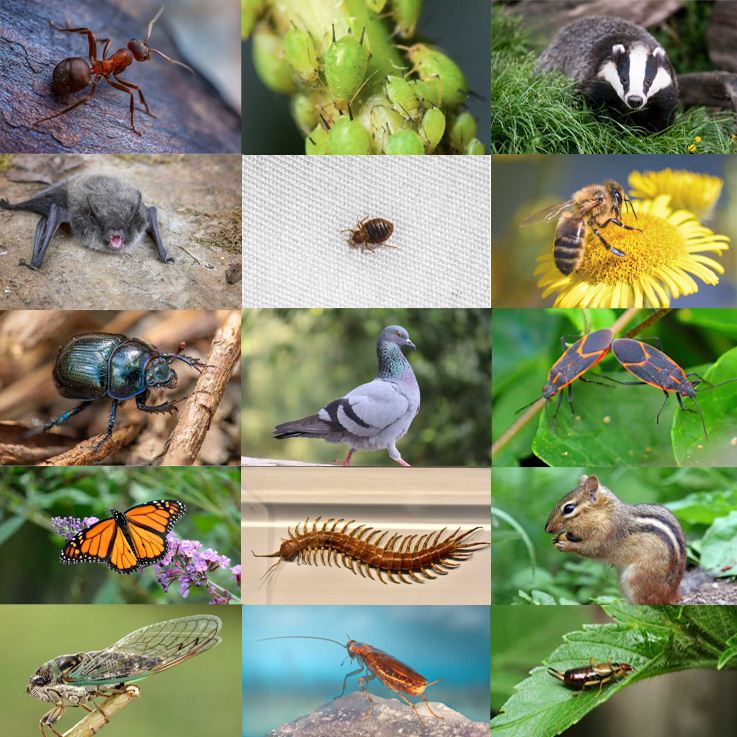
Control and Management
Managing squash bugs on squash plants typically involves a combination of methods:
Handpicking
Regularly inspect your squash plants and remove adult squash bugs, nymphs, and eggs by hand. Drop them into a container of soapy water to dispose of them.
Row Covers
Use row covers or fine mesh netting to physically exclude squash bugs from young plants during the early part of the growing season.
Garden Hygiene
Practice good garden sanitation by removing debris and plant residues, which can provide overwintering sites for squash bugs.
Companion Planting
Some companion plants like nasturtiums and marigolds can help deter squash bugs from your cucurbit crops.
Beneficial Insects
Encourage natural enemies of squash bugs, such as parasitic wasps and tachinid flies, which can help control their populations.
Effective control of squash bugs often requires vigilance and regular monitoring of your squash plants. Early intervention can help minimize damage and protect your crops. Integrated pest management (IPM) approaches that combine various control methods are typically the most effective way to manage squash bugs in your garden.

Hear From Our Happy Customers
-
"Exceeds Expectations"
I can’t say enough positive things about this company... The tech that came out, Jarvis went above and beyond my expectations. Thank you guys, I will continue using your services.
- Jake M. -
"Very Knowledgeable"
The tech that arrived was courteous, professional, and very knowledgeable. He was Great.
- Uerial I. -
"Great Communication"
Tech was on time, communication was great, and he accommodated my needs.
- Alonzo W. -
"Professional & Considerate"
I’m pleased with Miche services. Jarvis came today. Professional and considerate. Thank you!
- Judy B. -
"Wonderful Service"
Wonderful service. Jarvis is great. Took care of everything I needed. Thank you!
- Henry P. -
"Fantastic & Patient"
Jarvis was fantastic and patient. He answered my questions with an in-depth explanation and addressed all of my areas of concern. Would love for him to be my assigned tech going forward. Well done!
- Yonnette M.

